As a Child care provider in Charles Town, WV, we are in contact with our state officials at:
- coronavirus.wv.gov
- 1-800-887-4304 (Questions? Call 24/7, toll-free hotline)
For the latest updates from the CDC and World Health Organization to follow their most up-to-date guidance. For more information and resources on coronavirus, please visit the following websites:
In this article, we want to share three important topics concerning the Coronavirus (COVID-19): symptoms, prevention, and how to discuss the illness with your child.
Know the Symptoms
According to the CDC, the common symptoms of Coronavirus COVID-19 are:
• Fever
• Cough
• Trouble taking deep breaths
Remember that there are many different germs that cause many similar symptoms or sicknesses, but that doesn’t mean you have Coronavirus. In addition, other common symptoms, like headaches or stomachaches, for example, do not particularly indicate COVID-19.If you are feeling unsure about whether or not symptoms match Coronavirus, call your doctor for guidance.

Preventative Measures
The CDC recommends the following preventative measures to avoid the spread of COVID-19 (or any disease):
Stay home if you are sick.
Note that health organizations have indicated that face masks do not do much to prevent someone who is not sick from picking up germs. Face masks are more effective for those who are already sick, in order to prevent the spread of that sickness to others.
Disinfect frequently touched surfaces.
(Door handles, tables, light switches, etc.) Your child can help you do this in your home, and it can help him or her to experience a sense of control and responsibility, which will be very healthy psychologically.
Cough or sneeze into your elbow or tissue rather than your hands. Throw tissues away immediately and wash your hands (see below).
Avoid touching your face. Especially your mouth, nose, and eyes. This keeps germs from getting into your body.
Wash hands frequently, especially before meals, following the correct method for handwashing:
- Get your hands wet.
- Apply soap.
- Rub and scrub your hands all over for 20 seconds, creating lots of lather.
i. Teach children to sing “Twinkle, Twinkle Little Star”, or any other song they know the words to that lasts 20 seconds.
ii. Show children a simple order to follow in handwashing, such as rub the front of your hands together, rub the back of each hand in turn, then lace your fingers together to rub the sides of your fingers.
iii. The best way to teach this is to model it yourself, and then have your child practice it. You want to make sure your child will know how to follow this method even when you are not there. - Rinse. It is actually the soap itself that dissolves the fat membrane on a virus, causing it to fall apart and “die”. Any kind of soap will accomplish this—you do not need special hand-sanitizer or anti-bacterial soap (which doesn’t affect viruses in any case, and is generally controversial in the scientific community). Hand-sanitizer can be used as a back-up option, but plain old soap and water are the most effective, if you follow the CDC-recommended method above. (This means you don’t need to worry too much about those hand-sanitizer shortages!!)

Communication Guidance
When speaking with your child about the Coronavirus there are some key goals to keep in mind.
- Be honest and factual. Children deserve clear, accurate information that is pitched to their level. We don’t want to give them information that is beyond their comprehension. We want to reassure them, but we also don’t want to hide anything. If we are scared to talk about a topic, children will read that from us, and it can lead to greater fear and uncertainty.
- Be calm and reassuring. Avoid talking to your children in a spirit of anxiety. Wait until you yourself are in a frame of mind where you are feeling calm and in control before initiating a conversation. Focus on facts that are reassuring, such as the fact that COVID-19 is a comparatively rare virus (in the hundreds of thousands of cases worldwide, as compared with, for example, the flu, with an estimated 1 billion cases per year worldwide). Be mindful to the fact that most people who have gotten COVID-19 have not gotten very sick, and children especially do not seem to get very sick.
- Answer questions honestly. “Follow your child” by listening carefully to his or her questions, answering them seriously to the best of your knowledge, and, if you don’t know the answer, simply saying that you aren’t sure.
- Teach preventative measures. The most important thing children need to know is how to avoid getting sick! Use the Montessori approach of modeling and then encouraging your child to practice with things like coughing into your elbow, and washing hands in a way that successfully destroys viruses and other germs. (We will model and practice these things at school as well.)
We also recommend this short video from the Child Mind Institute for additional guidance to follow in talking to children about COVID-19.
Teachers and parents, we are in this together! Stay positive, stay healthy and keep washing your hands! 👐💦
